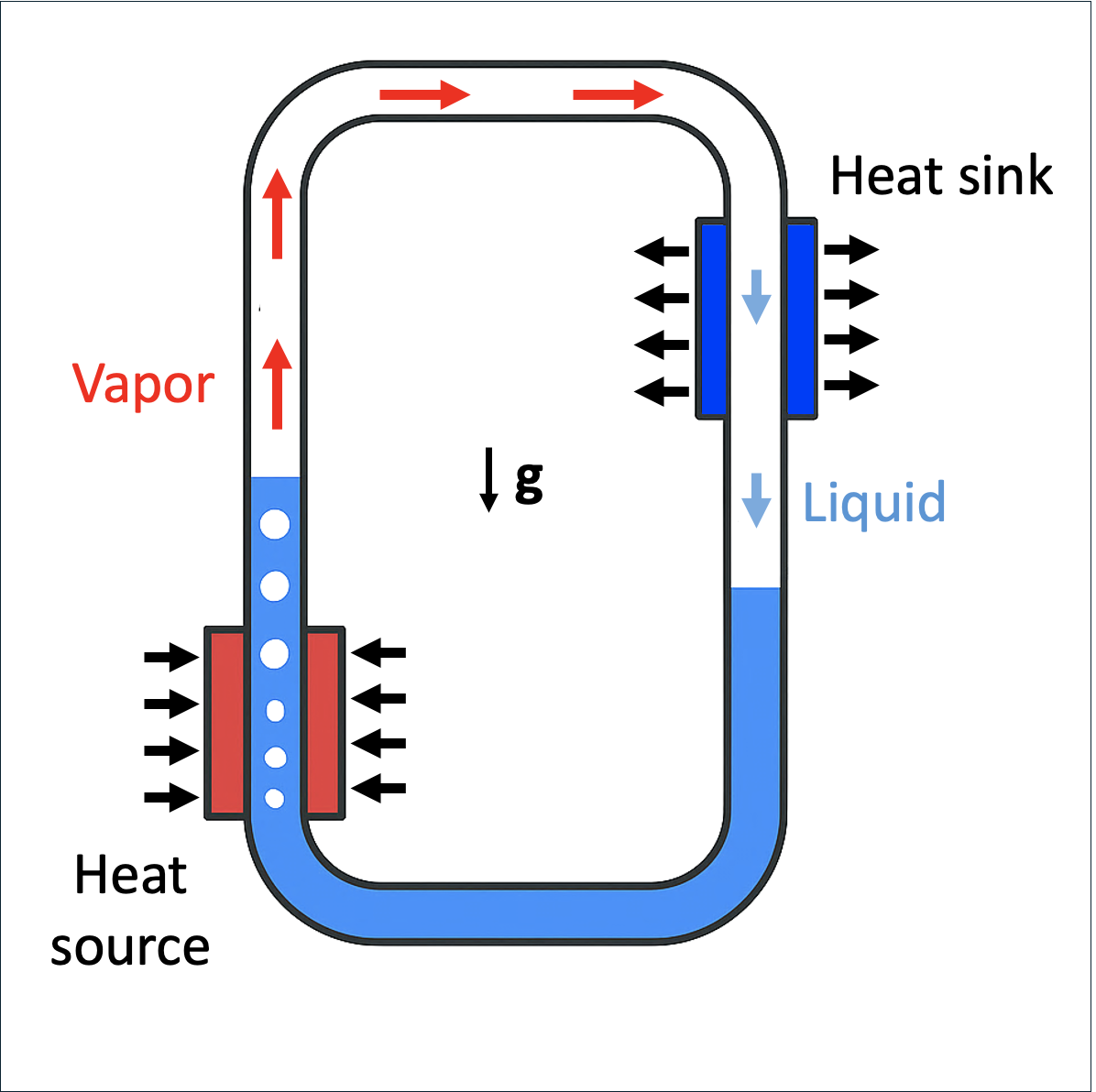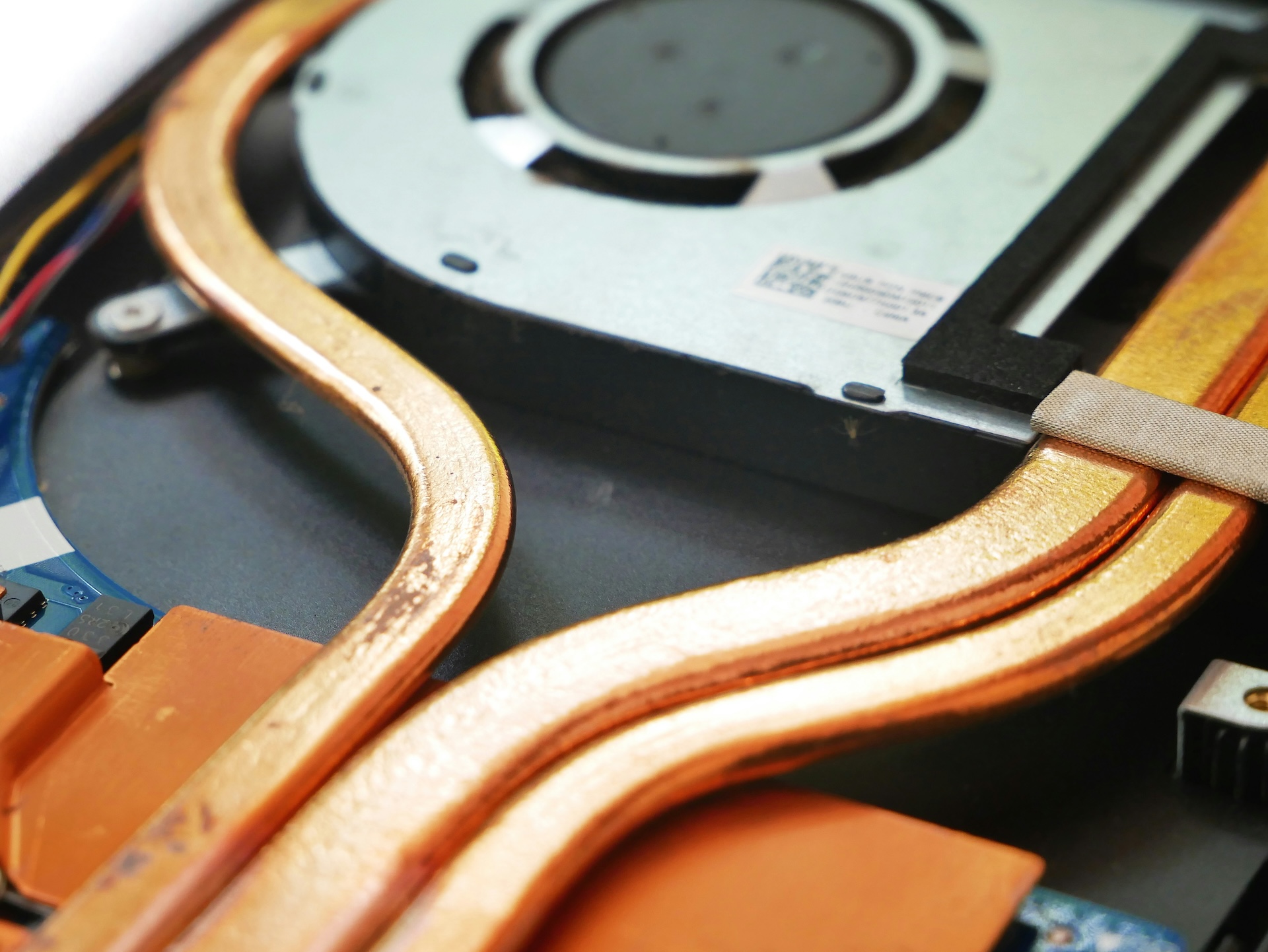Heat pipes and thermosyphons are highly efficient heat transfer devices that operate based on two-phase fluid cycles. Both typically consist of a sealed, evacuated tube containing a controlled amount of working fluid, such as liquid nitrogen, water, alcohol, naphthalene, liquid sodium and among other. In heat pipes, fluid movement is driven by capillary forces generated by an internal wick, while in thermosyphons, gravity performs this function. Despite variations in geometry and configuration, both devices share a fundamental structure comprising two main regions: the evaporator and the condenser, with a third thermally insulated (adiabatic) region sometimes present between them.
These technologies are widely employed in applications requiring efficient heat transfer and uniform temperature distribution, offering precise thermal management across a broad range of equipment sizes — from very small, such as micro and mini, to large-scale systems. As a result, they have become essential solutions for tackling heat transfer and thermal control challenges worldwide.
Heat Pipes can be divided into different configuration, such as:
- Conventional Heat Pipes (HP)
- Loop Heat Pipes (LHP)
- Vapor Chambers (VC)
- Pulsating Heat Pipes (PHP)
In the same way, thermosyphons can be divided into:
- Thermosyphons (TS)
- Loop Thermosyphons (LTS)
The History of Technology

Heat pipes
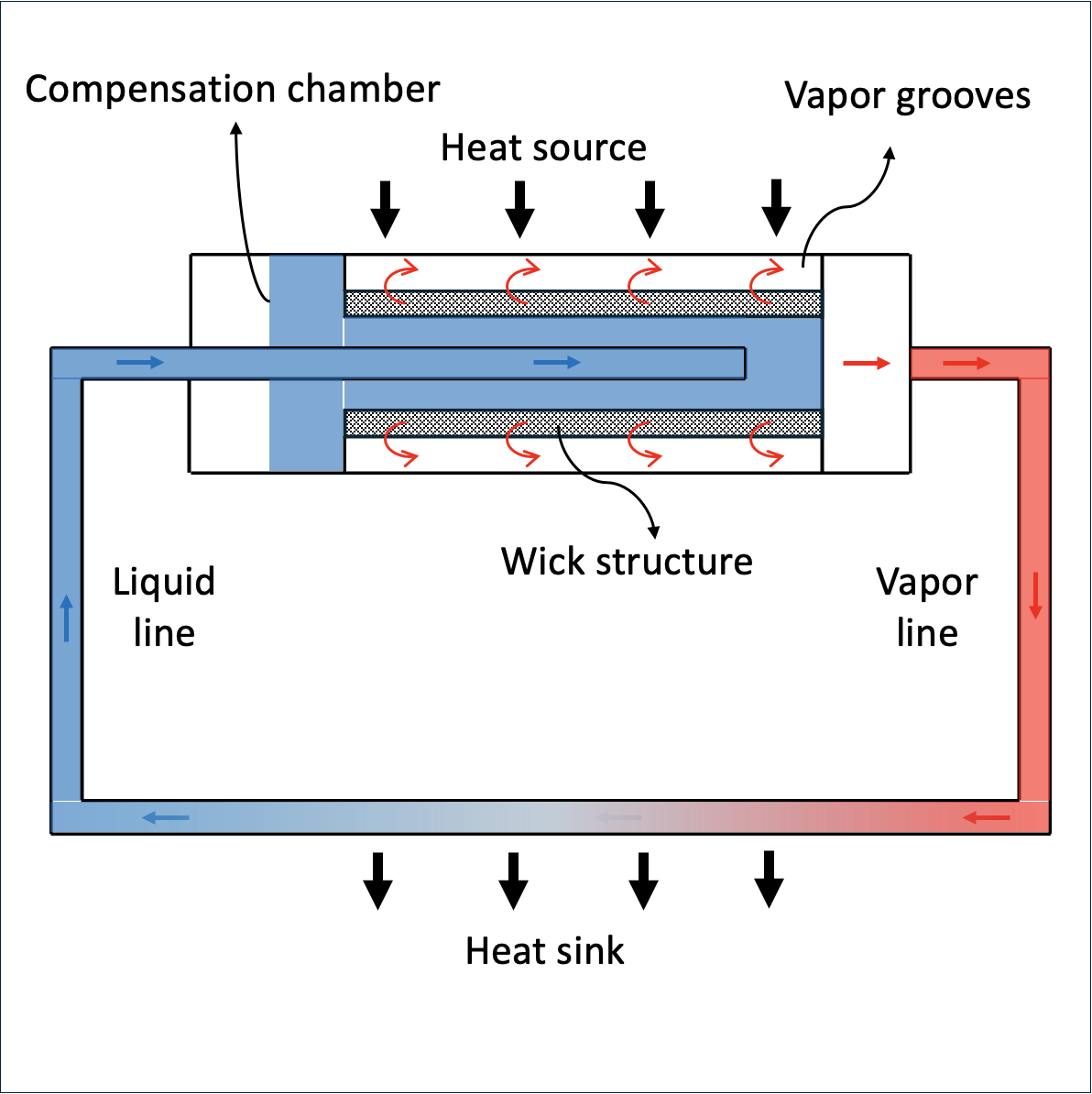
Loop heat pipes

Pulsating heat pipes
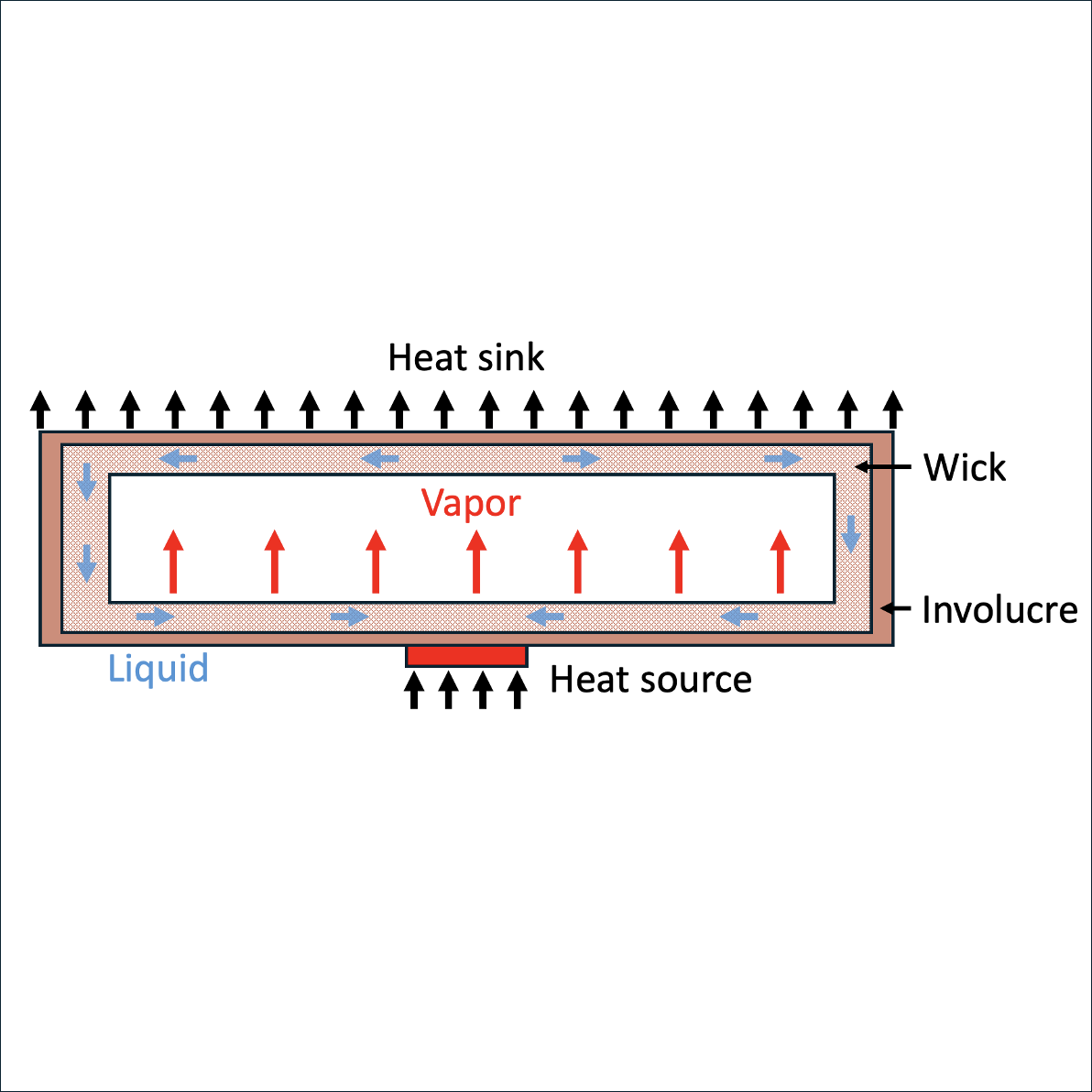
Vapor chambers
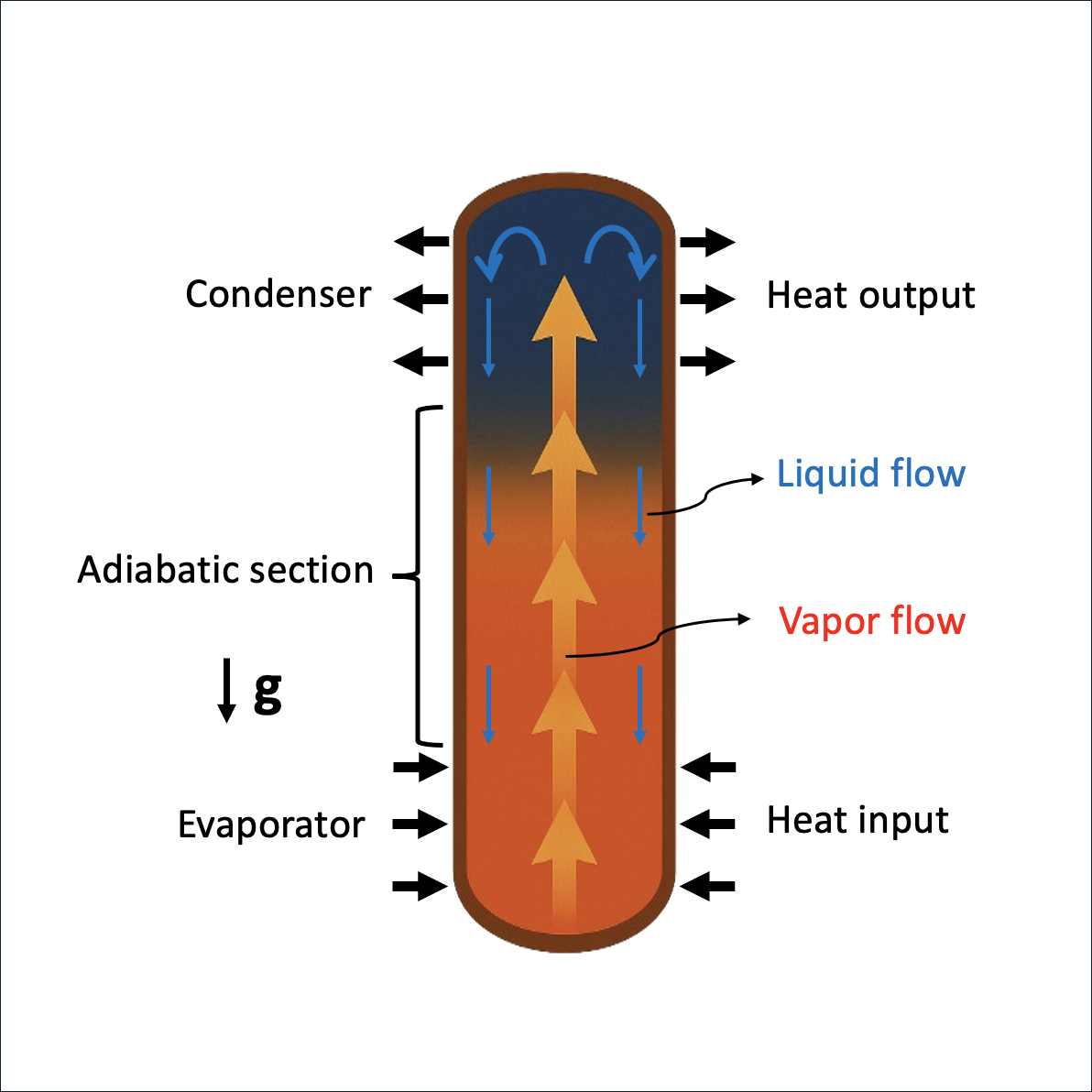
Thermosyphons
